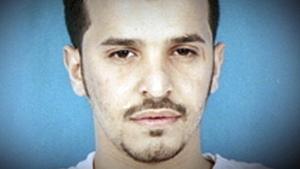TerrorismAl Qaeda's chief bomb maker killed in U.S.-backed attack in Yemen
Ibrahim al-Asiri, 32, al-Qaeda’s chief bomb-maker, is said to have been killed in a U.S.-supported, 2-day attack on al-Qaeda operation base in south Yemen on Sunday and Monday. The attack on the base included ground attacks by Yemeni special forces ferried to the theater in Russian-made helicopters piloted by U.S. Special Forces pilots, and drone strikes. Yemeni special forces, using intelligence provided by the United States, set up an ambush for al-Asiri and opened fire on a 4x4 vehicle believed to be carrying him. Samples were taken from the body believed to be that of al-Asiri, and DNA tests are now being conducted.

Ibrahim ad-asiri, al-Qaeda's chief bomb-maker // Source: grid.mk
Ibrahim al-Asiri, 32, al-Qaeda’s chief bomb-maker, is said to have been killed in a U.S.-supported, 2-day attack on al-Qaeda operation base in south Yemen on Sunday and Monday. The attack on the base included ground attacks by Yemeni special forces ferried to the theater in Russian-made helicopters piloted by U.S. Special Forces pilots, and drone strikes (see “U.S. drone attacks kill at least 55 al-Qaeda militants in Yemen,” HSNW, 22 April 2014).
The Daily Mail reports that Yemeni special forces, relying on intelligence provided by the United States, set up an ambush for al-Asiri and opened fire on a 4x4 vehicle believed to be carrying him.
The four passengers in the vehicle were able to shoot back, but were all killed after a short fire fight.
The Times reports that the troops used sniffer dogs as they identified those inside the vehicle, and later confirmed that one was a “high value militant” with Saudi citizenship, a description which matches that of al-al-Asiri. Samples from the body were taken and are now being matched with al-Asiri’s DNA, which the Saudis obtained from his family members living in Saudi Arabia.
The DNA test results will not be known for several days.
If al-Asiri is identified as one of those killed, he would be the most senior al Qaeda member to be killed since Osama bin Laden was killed in Pakistan in May 2011.
Al-Asiri is highly regarded as an innovative bomb-maker. His specialty is designing explosive devices which contain no metal parts, making them practically undetectable. The devices he had designed were small enough to be hidden in shoes, underwear, printer cartridges, and even body cavities.
In 2010, the CIA, in one of its most brilliant coups, managed to insert an operative into al-Asiri’s inner circle. This operative alerted the CIA to the two ink cartridges bombs which were placed, at a Yemeni airport, on two U.S.-bound cargo planes. The operative’s information led to the interception of the two planes, one in Dubai and the other in the East Midland in the United Kingdom.
The CIA was planning for the operative to take down al-Asiri, but the secret operation was leaked to the AP before this could be done. The U.S. government pleaded with the news service not to publish the story, but the AP agreed only to delay publishing it for one week to ten days, to allow the agent to extricate himself and his family.
The AP refused to delay publishing to story beyond that, even when told that publishing it would mean that al-Asiri would continue to design ever-more-sophisticated bombs would risk hundreds, or even thousands, of lives.
After the AP ran with the story and the covert operation was ended, a judge authorized placing bugs on about twenty phone lines in AP’s offices in an effort to learn who was the leaker, but the investigation yielded no results (see “Details of al Qaeda’s ‘next generation’ bomb, aborted effort to take out its designer, emerge,” HSNW, 25 July 2013; “Leak exposed valuable informant, jeopardized counter-terrorism efforts,” HSNW, 20 May 2013; “U.S. secretly obtains AP phone records to identify source of story,” HSNW, 14 May 2013).
